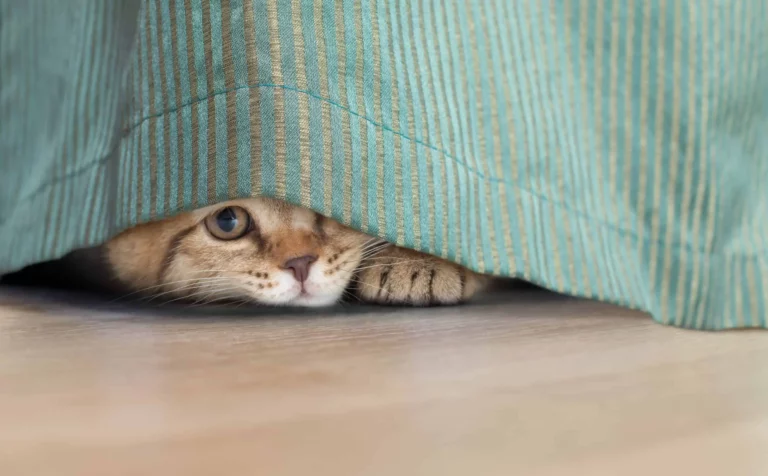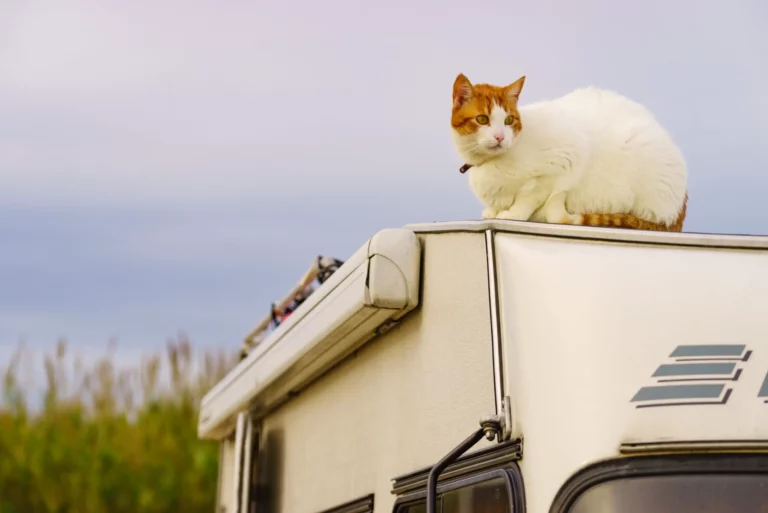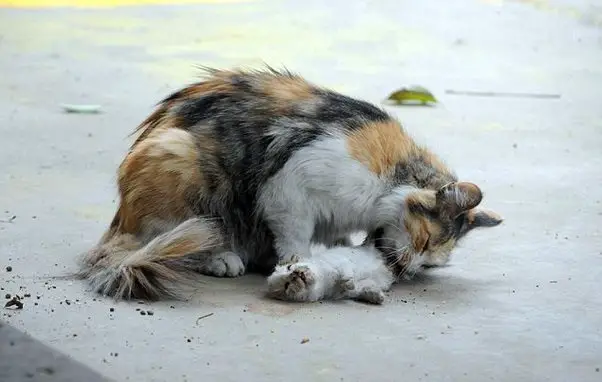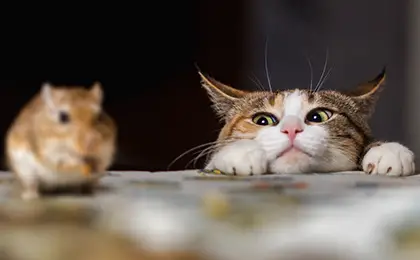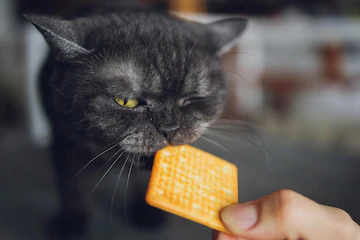How Much Wet Food to Feed a Cat (Including a Feeding Calculator)
Feeding your cat a healthy and balanced diet is one of the most important things you can do for their overall health and well-being.
While dry food is a popular choice among cat owners, wet food can offer numerous benefits to cats, including increased hydration and higher protein content.
However, it’s crucial to ensure you’re feeding your cat the right amount of wet food to meet their nutritional needs without overfeeding or underfeeding them.
In this blog post, we’ll be able to use our simple feeding calculator to work out the right amount of wet food to feed your cat.
I’ll also cover how to calculate how much wet food to feed your cat using various factors such as their age, weight, activity level, and nutritional needs.
We’ll also provide tips for feeding cats wet food and answer some frequently asked questions on the topic.
With this information, you’ll be able to ensure that your feline friend is getting the right amount of wet food to keep them healthy and happy.
Key takeaways
The quantity of wet food to feed a cat depends on its weight, age, and health status.
An average adult cat needs approximately 20 calories per pound of body weight.
Wet cat food typically contains about 25 to 35 calories per ounce.
A healthy 10-pound adult cat would need roughly 200 calories per day, or around 6 to 8 ounces of wet food.
Kittens require more food relative to their weight to support growth.
Senior cats or those with health issues may have specific dietary requirements.
Always consult with a vet for personalized feeding advice.
Cat Food Calculator
Use this calculator to determine how much wet food to feed your cat.
Factors to Consider When Calculating How Much Wet Food to Feed a Cat
Feeding the appropriate amount of wet food to your cat requires taking into account several factors that affect their nutritional requirements. Some of the factors to consider when calculating how much wet food to feed your cat include:
Age, Weight, and Activity Level of the Cat: Kittens and adult cats have different nutritional needs, and the amount of wet food they require can vary based on their age, weight, and activity level. Younger cats and kittens may require more food than older cats due to their high energy levels and rapid growth.
Nutritional Needs of the Cat: The nutritional requirements of your cat depend on various factors, such as their breed, health condition, and reproductive status. For example, pregnant or nursing cats may require more food than those who are not.
Type and Quality of Wet Food Being Fed: Different brands of wet cat food have varying nutritional content and calorie density. It’s essential to choose high-quality wet food that meets your cat’s nutritional needs and has no harmful additives.
Feeding Schedule and Frequency: Cats should be fed several small meals throughout the day rather than one large meal. How often you feed your cat and the portion size can affect their weight and overall health.
By considering these factors, you can determine the right amount of wet food to feed your cat and ensure that they are receiving the proper nutrition to stay healthy.
Understanding the Importance of Measuring Wet Cat Food for Your Feline Friend
You may be curious about the significance of accurately determining the appropriate quantity of wet cat food for your cat.
As of 2017, approximately 60 percent of cats in the US are considered overweight or obese, which equates to around 56.5 million cats.
Excess weight has a substantial and detrimental impact on a cat’s well-being.
Cats carrying extra weight face heightened risks of congestive heart failure, skin issues, infections, diabetes mellitus, complications during anesthesia and surgery, hepatic lipidosis (a life-threatening liver disease), and certain forms of cancer.
Providing wet food to cats is not as straightforward as merely opening a can and allowing them to eat until they’re satisfied. Indoor cats, specifically, tend to expend few calories throughout the day and are prone to boredom, which often results in overeating and subsequent weight gain.
To prevent or address weight issues in cats, pet owners must adopt a methodical approach to portioning out their cat’s food.
Determining the Appropriate Amount of Wet Food for Your Cat
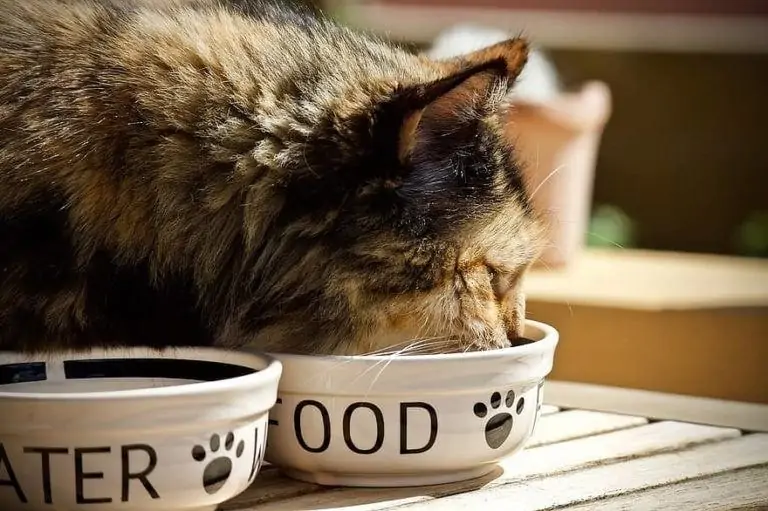
Initially, consult with a veterinarian to assess your cat. The vet will weigh your cat, establish its optimal weight, and calculate the daily caloric intake necessary to achieve this goal.
Utilizing a pet calorie calculator can also give you a rough estimate. If your cat is significantly overweight, your veterinarian might suggest a prescription cat food designed for weight loss; otherwise, an over-the-counter weight management cat food should be sufficient.
Next, examine the label on your cat’s wet food. The feeding guidelines might be somewhat ambiguous, and they definitely do not cater to every cat in every situation. Performing some calculations can be helpful. The caloric content of the wet cat food should be displayed on the label.
For instance, the American Journey minced chicken and tuna recipe contains 73 calories per 3-ounce can. If this information is unavailable, search for it on the manufacturer’s website or contact them directly.
Assuming your veterinarian has determined that your cat requires a daily intake of 240 calories, you can calculate the number of 3-ounce cans of the American Journey chicken and tuna recipe to feed your cat each day by dividing 240 by 73.
240 / 73 = 3.3
As a result, your cat needs to consume approximately 3 1/3 cans of this specific food daily.
Importance of Portion Control for Cats
For cats struggling to maintain a healthy weight, it is advisable to provide several measured meals throughout the day instead of allowing constant access to food.
Discuss with your veterinarian the ideal feeding frequency for your cat based on your specific circumstances. Generally, cats thrive when they consume multiple smaller meals throughout the day—at least two, but possibly more.
The calculations you’ve performed can assist in making your decision. Using the example provided, your cat should consume 3 1/3 cans per day. It might be logical to serve three meals consisting of one can each, with the additional third of a can included in the final meal.
To determine the correct portion size for each meal, simply divide the total number of cans needed per day by the desired number of meals.
When monitoring your cat’s weight, it is crucial to consider the calories from any treats and dry food you offer. To help manage your cat’s weight effectively, maintain a log of its daily caloric intake goals and track the food and treats given throughout the day.
This will ensure you stay on track with your cat’s weight management plan.
Advantages and Disadvantages of Wet Cat Food
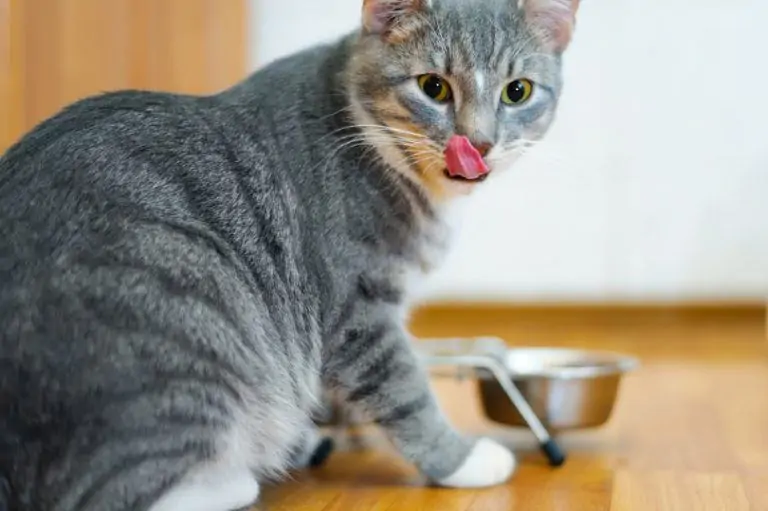
While wet cat food offers several benefits, there are also some factors to keep in mind. Here are a few:
Pros:
- High protein – Wet cat food generally contains more protein than standard kibble, as it includes actual meat chunks rather than processed proteins.
- Moisture content – Cats are more prone to dehydration compared to other pets. Wet cat food helps increase their water intake.
- Savory flavors – Cats appreciate the rich aromas of wet cat food, which can tempt even the fussiest eaters.
- Mixable – Wet food can be combined with dry kibble, adding extra moisture to your cat’s daily meal while maintaining the crunch necessary for dental health.
Cons:
- High calories – Wet cat food often has a higher calorie content than traditional dry kibble, so excessive consumption can lead to weight gain in cats.
- No crunch – Wet cat food lacks the crunchiness that helps clean teeth. Dry kibble’s texture reduces plaque and tartar buildup along the gum line. If you exclusively feed your cat wet food, it’s essential to brush their teeth daily to prevent dental issues.
- Low shelf life – Once a can of wet cat food is opened, any remaining contents must be refrigerated. While dry kibble has a lengthy shelf life, wet cat food lasts only up to three days in the fridge.
Cats That Benefit Most from Wet Cat Food
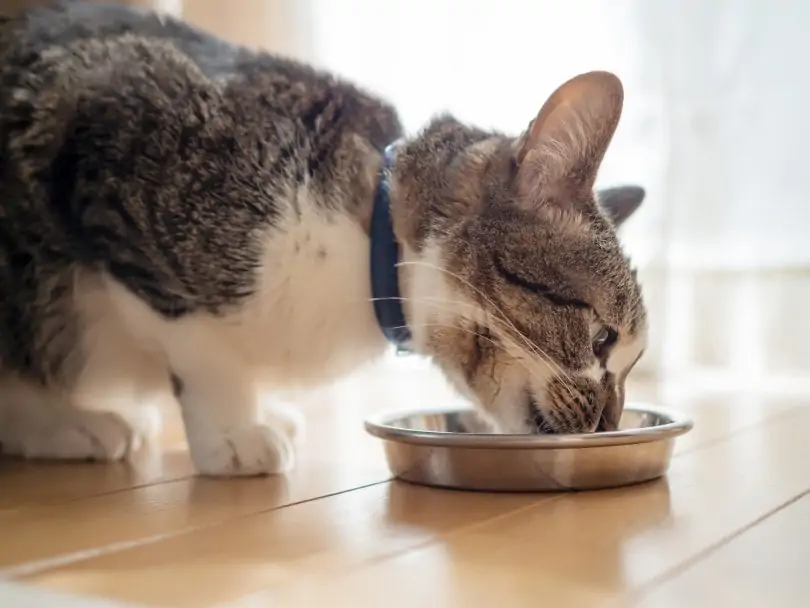
While any cat can enjoy wet cat food, specific felines may benefit more from this diet type.
- Senior cats – As cats age, their teeth may not be as healthy as they once were. Wet cat food can stimulate their appetite, ensuring they receive the necessary nutrition without difficulty in consuming the food.
- Dental issues – Cats with dental problems or missing teeth can find wet cat food a suitable alternative to dry kibble. Even those with multiple missing teeth can comfortably consume this type of food.
- Malnutrition – Wet cat food can be an effective option for rehabilitating cats that have experienced inadequate nutrition, helping them regain a healthy body weight.
- Picky eaters – Some cats may refuse to eat a meal if it doesn’t appeal to them. For particularly finicky eaters, wet food can entice their senses and encourage consumption.
The Significance of Maintaining a Healthy Weight
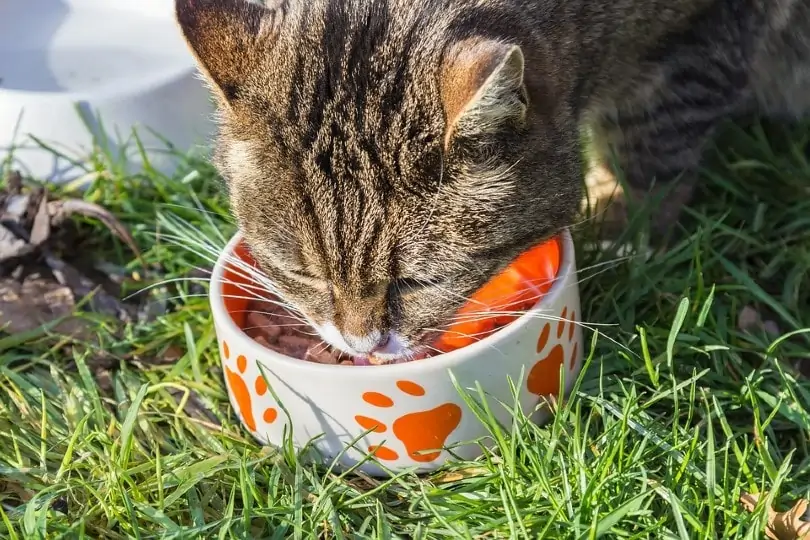
While plump cats may seem endearing, their health is a completely different matter. Overweight cats can face a range of complications, including:
- Infections
- Liver disease
- Cancer
- Congestive heart failure
- Skin disorders
- Diabetes
Proper weight management is essential to prevent these problems from arising. If you need to reduce your cat’s daily food intake, it’s crucial to consult your vet for accurate portion measurements.
Tips for Feeding Cats Wet Food
Feeding your cat wet food provides numerous benefits, but it’s important to do it correctly. Here are some tips to ensure your cat is receiving the right amount of wet food:
- Proper Storage and Handling of Wet Food: Wet food can spoil quickly, so it’s important to store it properly. Keep it in the refrigerator, and make sure to use it before the expiration date. Also, avoid leaving wet food out for too long to prevent bacteria growth.
- Gradual Transition to New Wet Food: If you’re introducing a new brand or type of wet food to your cat, do it gradually. Mix a small amount of the new food with their current food and gradually increase the amount over several days.
- Monitor Cat’s Weight and Adjust Feeding Amounts Accordingly: Overfeeding your cat can lead to weight gain and obesity, while underfeeding can cause malnutrition. Monitor your cat’s weight and adjust their feeding amounts accordingly.
- Provide Fresh Water: Wet food contains a high moisture content, but it’s still important to provide your cat with fresh water to prevent dehydration.
- Avoid Free-Feeding: Avoid leaving wet food out all day for your cat to eat as they, please. Instead, feed them several small meals throughout the day to help prevent obesity.
By following these tips, you can help ensure that your cat is getting the right amount of wet food to keep them healthy and happy.
Related:
Frequently Asked Questions
How much wet food should I feed my cat per day?
The amount of wet food to feed your cat depends on their weight, age, and activity level. You can use the wet food calculator on this page or consult with your veterinarian to determine the appropriate portion size and total daily amount of food for your cat.
Can I mix wet and dry food for my cat’s diet?
Yes, you can mix wet and dry food for your cat’s diet. However, make sure to monitor the portion sizes to prevent overfeeding, and provide fresh water at all times.
Should I feed my cat on a schedule, or can I leave food out all day?
It’s best to feed your cat on a schedule rather than leave food out all day. Cats are natural grazers and may eat more than they need if food is always available. Feeding them several small meals throughout the day can help prevent overeating and obesity.
How do I know if I’m feeding my cat enough wet food?
You can monitor your cat’s weight and body condition to ensure they are receiving the appropriate amount of wet food. A healthy cat should have a visible waistline and ribs that are easily felt but not visible.
Is it safe to feed my cat the same brand of wet food all the time?
Feeding your cat the same brand of wet food is safe as long as it meets their nutritional requirements and has no harmful additives. However, you can also rotate between different brands and flavors to provide variety and prevent your cat from getting bored with their food.
Final Thoughts on How Much Wet Food to Feed a Cat
Providing your cat with the right amount of wet food is essential for their overall health and well-being.
By considering factors such as age, weight, activity level, and nutritional needs, you can accurately calculate the appropriate portion size for your feline friend.
Remember to consult your veterinarian for guidance on your cat’s specific dietary requirements and monitor their weight regularly.
With a balanced and portion-controlled diet, you can help your cat maintain a healthy weight and enjoy a happier, healthier life.
Don’t forget to follow proper storage and handling procedures for wet food and provide fresh water to keep your cat hydrated.
By adhering to these guidelines, you’ll be well-equipped to support your cat’s nutritional needs and overall well-being.

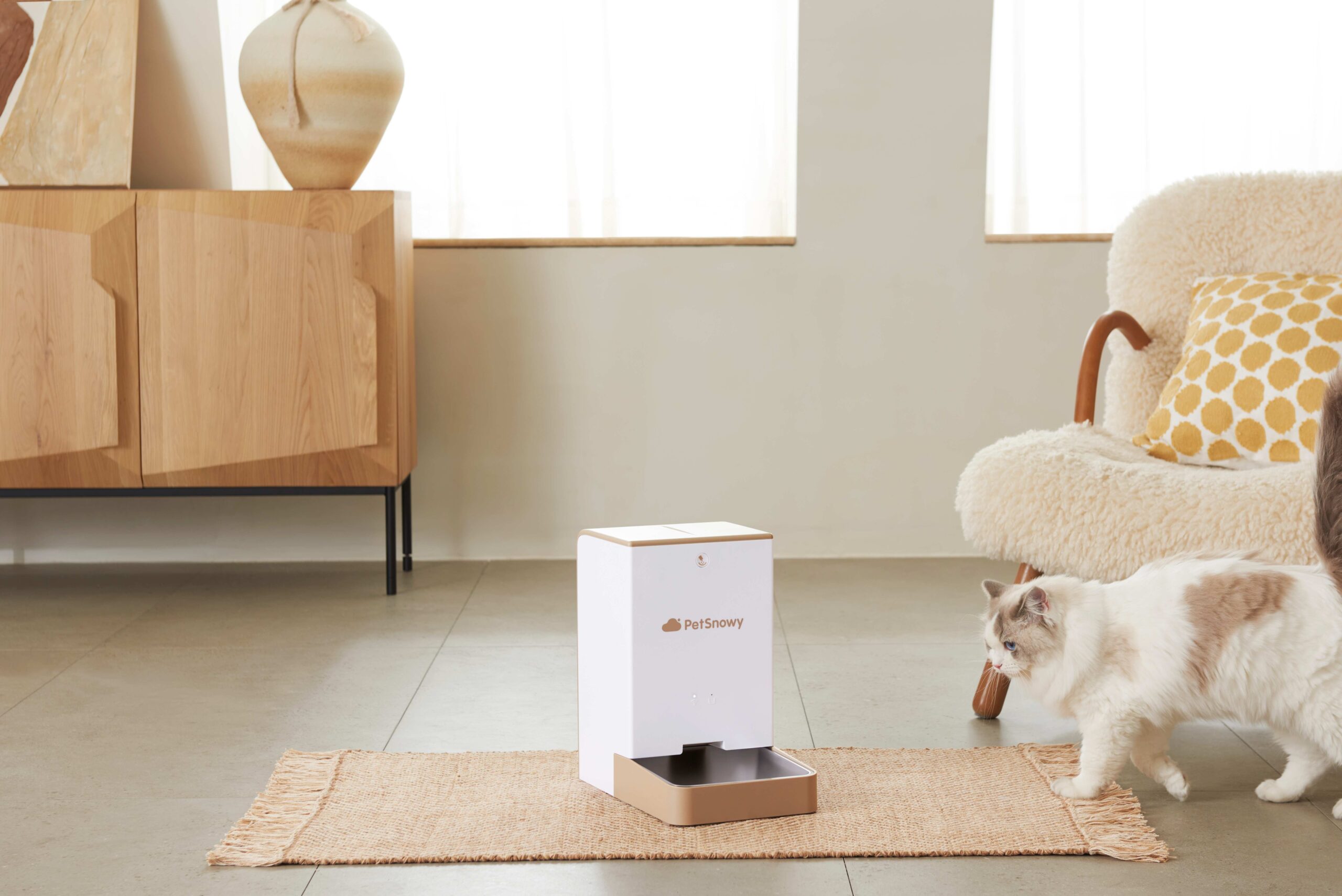
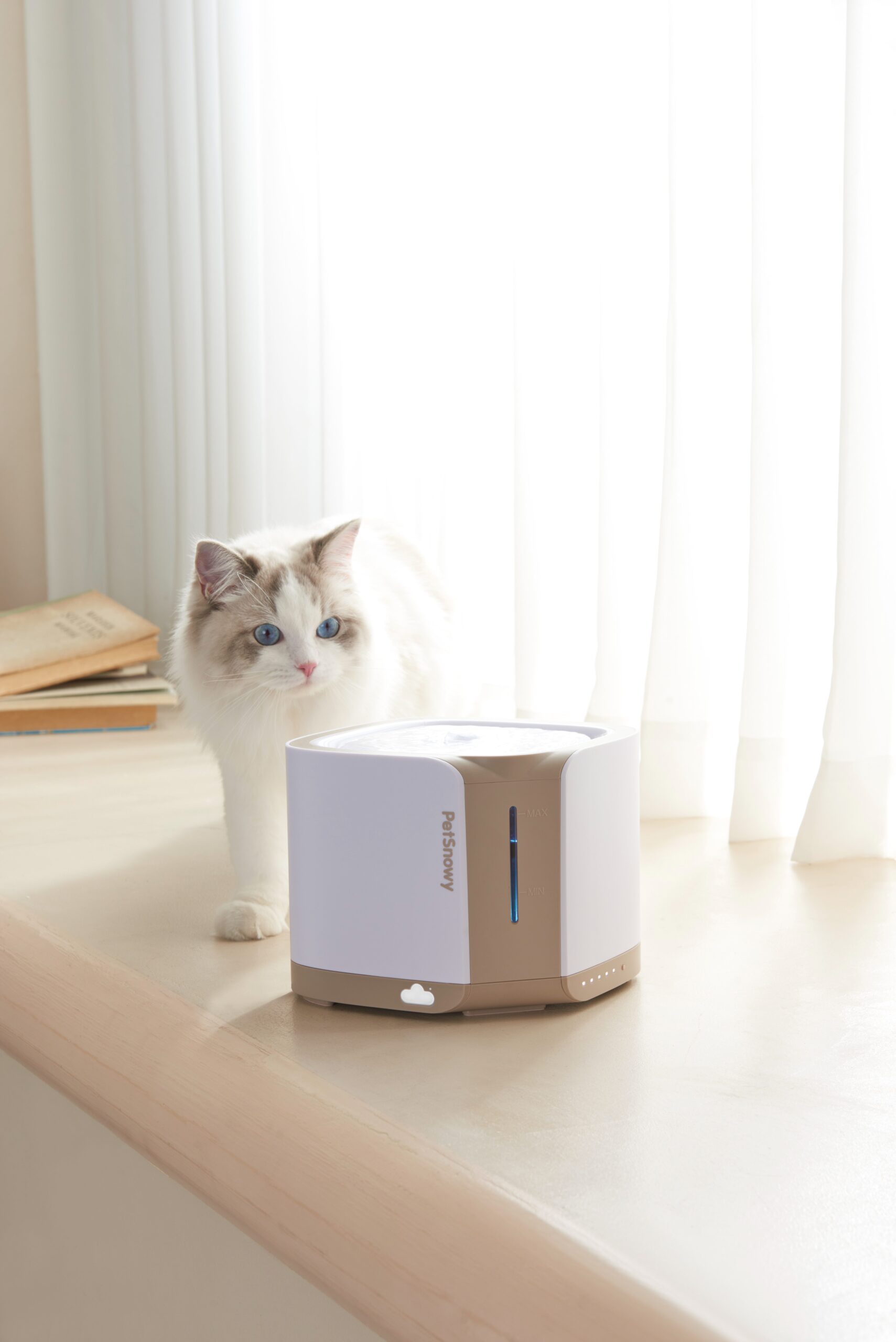
![Why Do Cats Paw Around Their Food Bowls? [7 Reasons]](https://www.warmlypet.com/wp-content/uploads/2023/01/Cat-paws-in-a-bowl-768x513.webp)
